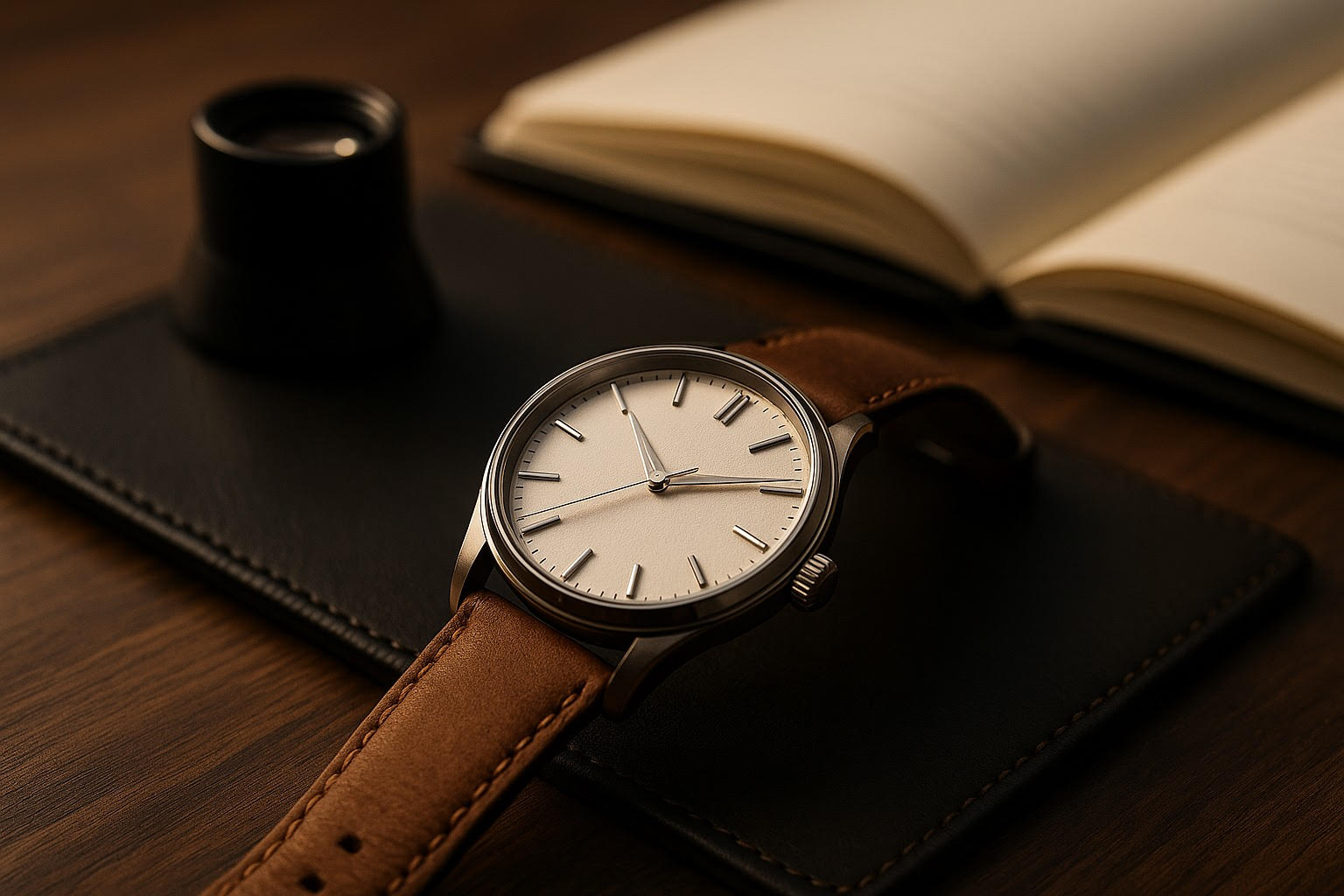Anatomy of a Watch — What Every Collector Needs to Know
If you’re going to talk watches, know what you’re pointing at when someone asks, “What movement is in that?” or “Is that sapphire?”
Otherwise, you sound like the person who can name every NFL team and still can’t explain the rules. We’re not doing that here.
Here’s the anatomy of a watch — the parts that matter when you’re building a collection and a real conversation.
The Parts That Count
The Movement (the engine)
This is what makes your watch tick. Mechanical, automatic, or quartz — each carries a distinct personality. Mechanical needs winding. Automatic powers itself with your wrist. Quartz delivers reliable accuracy from a battery. The movement is where watchmakers flex their craft and where collectors geek out.
The Mainspring
The energy store for mechanical and automatic watches. Wind it, it coils, then releases power in a controlled way to run the watch. Tiny coil, massive impact.
The Escapement
The gatekeeper that releases energy from the mainspring in precise ticks. No escapement, no rhythm — only chaos.
The Case
The body that protects the heart of the watch. Size, shape, and material tell a story: stainless steel, titanium, gold, ceramic — each signals tool watch, daily driver, or boardroom flex.
The Dial
The face you actually look at: indices, numerals, hands, logo. Sunburst, matte, enamel — design choices that change personality instantly.
The Bezel
The ring around the dial. On divers and GMTs, a bezel can measure elapsed time or track a second time zone.
⚠️ Pro move: not every bezel rotates. Don’t torque a fixed bezel at dinner like you’re opening a pickle jar. That’s a fast way to announce you’re new to all of this.
The Crystal
The clear cover that protects the dial. Entry-level pieces often use mineral glass. Serious watches use sapphire crystal thanks to its extreme scratch resistance. Keys in your pocket? Granite countertop? Sapphire shrugs. The gold standard — maybe the gemstone standard!
The Lugs
The “arms” that hold your strap or bracelet. Pay attention to lug width and lug-to-lug length. Get proportions wrong and a 40 mm case wears like a dinner plate. Get them right and it disappears on wrist — in the best way.
Complications
Anything beyond hours and minutes. Chronograph, GMT, moonphase, date, perpetual calendar. Each adds mechanical complexity and conversation power.
COSC-certified (more on that in future posts)
When you see this term, it means the movement passed independent Swiss chronometer testing for accuracy. Stamp of precision, recognized worldwide.
Collector’s Take
Knowing these parts isn’t trivia — it’s fluency. Mention a domed sapphire crystal, discuss lug-to-lug comfort, or explain COSC-certified testing, and you move from “person wearing a watch” to “collector with a clue.” Respect follows fluency.
Closing Punch
Next time someone asks about your watch, skip “It’s blue.” Try this: “Automatic movement, sapphire crystal, 40 mm case, clean sunburst dial. Fixed bezel — on purpose.”
Now you sound more like a collector. That’s the point of Time Well Spent.






